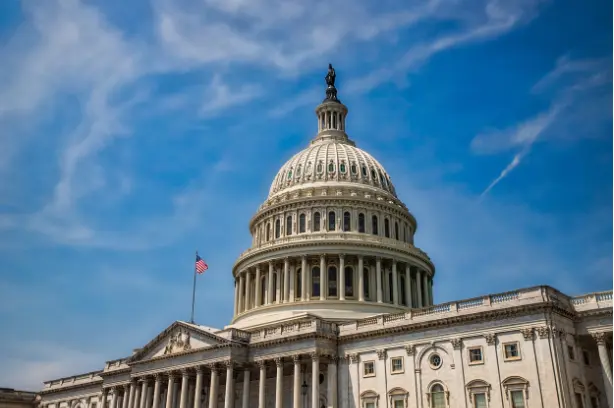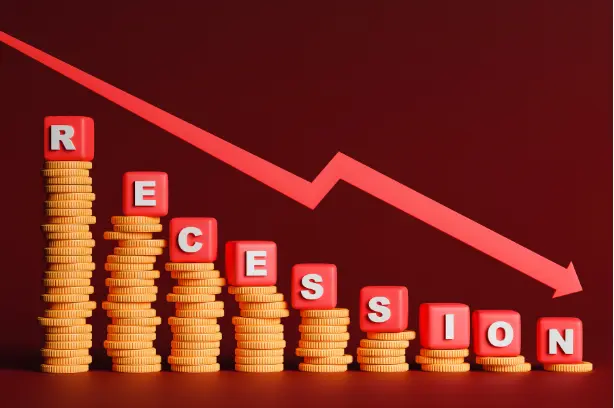By Preserve Gold Research
In a sudden escalation of Middle East tensions, a barrage of missiles and drones were seen approaching the skies of an already tormented region earlier this month. The shadow war that once prevailed between Iran and Israel has now been fully exposed, with both sides openly targeting each other. In what Iranian authorities have described as a retaliation for an alleged Israeli strike on Iran’s consulate in Damascus, more than 300 projectiles were reportedly fired toward Israel by Iranian forces, marking a turning point in the ongoing conflict.
The exchange of attacks has raised concerns among neighboring countries and the international community, with fears of a full-blown war breaking out in the volatile region. “The Middle East is on the brink,” stated United Nations Secretary-General Antonio Guterres, in a plea for de-escalation and dialogue between the involved parties. “Now is the time to defuse and de-escalate. Now is the time for maximum restraint,” he added.
Unlike past conflicts in the region, which have historically been contained within the borders of the involved nations, Iran’s attack on Israel has signposted a shift towards a wider conflict. The long-standing tensions between Israel and Iran have now become an open confrontation, something that experts say could draw in a wider array of participants — including the United States, which has pledged its “ironclad” support for Israel.
As tensions continue to rise, the impact is being felt beyond just military action. Stock markets took a hit following the attacks, with all three major US indices falling as investors reacted to the news. Bond yields also dropped, reflecting the heightened anxiety and uncertainty in the markets. But amid the chaos, a flight to safety saw gold prices break through its previous all-time high as markets shifted towards the precious metal in search of stability.
‘The End of Strategic Patience is Over’ – What It Means for Diplomacy
While the majority of the world’s major powers condemned Iran’s attack on Israel, some experts are concerned that it won’t be enough. Diplomatic relations have long been strained between the two countries, with the US and Israel accusing Iran of sponsoring terrorism, while Iran has fired back with accusations of aggression and interference. The recent attacks have only added fuel to the fire, with Israel vowing to “build a regional coalition and exact the price from Iran in the fashion and timing that is right for us.” But what does this mean for diplomacy moving forward?
According to some analysts, the era of “strategic patience” is over. Iran’s open aggression towards Israel has marked a shift in diplomatic strategies, with both sides taking increasingly bold and confrontational actions. Following the attack on Israel, Iran’s Guards chief Hossein Salami declared a shift in the regional dynamics, emphasizing Iran’s readiness to confront its enemies. “Should the Zionist regime attack our interests, our assets, our personnel, and citizens at any point, we will counterattack it from the Islamic Republic of Iran,” he stated. Hailed as a hero in Iran, Salami’s aggressive stance reflects the country’s emboldened foreign policy.
Insisting that the attack was in self-defense, Iran also warned Israel against any further aggression, stating that it will retaliate with “direct and punishing response” if provoked. But with Israel equally determined to protect its interests and citizens, the situation is a powder keg waiting to explode.
Historically, Israel has responded forcefully to aggression, aiming to deter future hostilities. Following the 2006 cross-border raid by Hezbollah, Israel launched a month-long war in Lebanon, targeting the group’s strongholds and infrastructure. Similarly, in 2008, Israel launched Operation Cast Lead against Hamas in Gaza, after years of rocket attacks on its southern towns. Given this track record, analysts caution that Israel may not hesitate to respond with military force against Iran’s provocative actions. And with Prime Minister Benjamin Netanyahu’s political future also at stake, there is added pressure for a decisive response to Iran’s latest attack.
Whether or not Israel decides to retaliate militarily, beyond what has already been reported, experts say the tension and animosity between the two countries are unlikely to dissipate any time soon. Both sides have publicly stated their determination to defend their interests and citizens, and any future clashes could escalate into a wider conflict. With Netanyahu stating in a recent speech that “whoever hurts us, we will hurt them,” it’s clear that Israel is prepared to take whatever steps are necessary to protect its sovereignty. As Israel deliberates its response to Iran’s aerial attack, the nation stands at a critical crossroads, weighing options fraught with inherent risks.
Implications for the United States
Despite President Biden stating that the United States will not participate in any counter-offensive against Iran, the US remains a key ally to Israel and could still be drawn into the conflict, according to those close to the situation. The looming specter of open warfare between Israel and Iran, with the potential to entangle the United States, raises serious concerns for global stability and security.
But beyond the potential for international involvement, the conflict between Israel and Iran also has implications for everyday American citizens. Economists and oil industry analysts have issued warnings that any escalation of the conflict could lead to a spike in oil prices, which would have a direct impact on American consumers. With Iran holding significant control over oil production and exports in the Middle East, gas prices could surge above $5 a gallon. And with oil prices already on the rise and a growing number of Americans relying on debt to cover basic expenses, an increase in gas prices could have a devastating effect on the economy and everyday Americans.
“It would probably push the U.S. economy into a ditch,” said Stewart Glickman, energy analyst at CFRA. “Everywhere you look, it will be more expensive,” he added. “It will feel like a really strong tax on our pocketbooks.”
Federal Reserve Chair Jerome Powell and Treasury Secretary Janet Yellen have also expressed concerns about the potential economic impact of a widening conflict between Israel and Iran. “Geopolitical tensions are highly elevated and pose important risks to global economic activity,” Powell said in a statement. “We are monitoring the situation closely and will continue to use our tools to support the economy.” Yellen echoed these sentiments, saying that “It’s critically important that the conflict not spread.”
Experts, including EY’s Chief Economist Gregory Daco, have warned that direct involvement from Iran and the United States could drive oil prices over $150 a barrel and significantly dampen economic growth. According to Daco, U.S. GDP growth could drop by 1.2%, or $2 trillion, in the event of a prolonged regional conflict. “The global economic consequences of this scenario are severe,” he cautioned, adding that a recession is not out of the question. With the U.S. already grappling with reaccelerating inflation amid multi-decade high interest rates, a surge in oil prices could compound these challenges and potentially lead to stagflation — a scenario of high inflation and low economic growth.
Seeking Safety Amid Upward Revisions
“The Middle East is on the brink. The people of the region are confronting a real danger of a devastating full-scale conflict.” The dire warning from UN Secretary-General Antonio Guterres is just one of many voices urging caution as tensions continue to rise in the region. Given the pervasive atmosphere of uncertainty fueled by the ongoing conflict, there’s a growing hesitancy to take on risk, which has led to a flight to safety in the financial markets.
As a result of the increased risk aversion, analysts have been quick to upgrade their gold price forecasts. In a recent report, Goldman Sachs raised its 12-month price target for gold to $2,700 per ounce, up from the $2,300 target set in March. The revision marks the fourth upward adjustment this year by the investment bank, which heralded the precious metal as being in an “unshakeable bull market”.
“The traditional fair value of gold would connect the usual catalysts – real rates, growth expectations and the dollar – to flows and the price. None of those traditional factors adequately explain the velocity and scale of the gold price move so far this year. Yet that substantial residual from the traditional gold price model is neither a new feature nor a sign of overvaluation,” the bank stated in their report.
Other financial institutions have also followed suit, with Citigroup recently projecting that gold prices could soar to $3,000 per ounce within the next six to 18 months, buoyed by economic uncertainty and growing interest from central banks. This prediction aligns with Bank of America’s forecast that gold could reach $3,000 per ounce by 2025. “Gold prices have been remarkably resilient in recent months, notwithstanding central banks around the world tightening monetary policy,” explained Michael Widmer, commodity’s strategist at Bank of America.
While traditional factors like interest rates and economic growth usually influence gold prices, recent surges in the value of gold have been primarily driven by aggressive purchasing by central banks. Countries like Russia and China have been steadily increasing their gold reserves, with The People’s Bank of China (PBoC) increasing its gold reserves for 17 consecutive months — a trend mirrored by various nations worldwide. Gold’s parabolic climb has broken away from its historically close correlation with U.S. Treasury bonds, which typically rise in value when investors are uncertain about the economy. Instead, gold prices have been rising, even outperforming the bull run of its digital counterpart, Bitcoin.
But the increasing bullish sentiment towards gold isn’t just limited to central banks. Money managers are also pouring money into the precious metal, driving up demand and prices in the process. With reaccelerating inflation stoking fears of a global economic slowdown, a growing number of institutions are turning to the yellow metal for its safe haven properties. As ING Economics noted in a research report, “Gold tends to become more attractive in times of instability when investors pile into safe-haven assets as a hedge against the economic climate, geopolitical tensions or inflation…we believe this is likely to continue for the rest of this year.”







